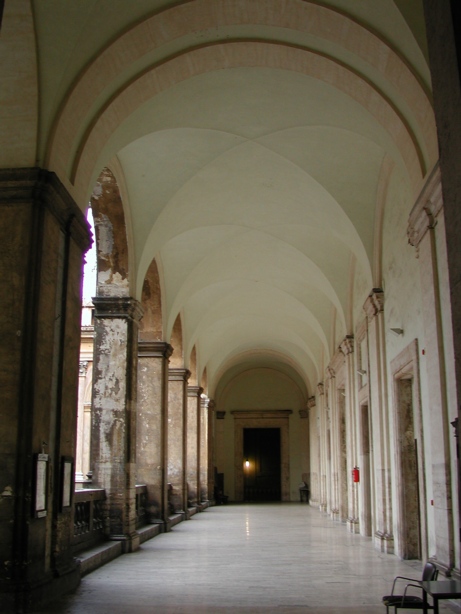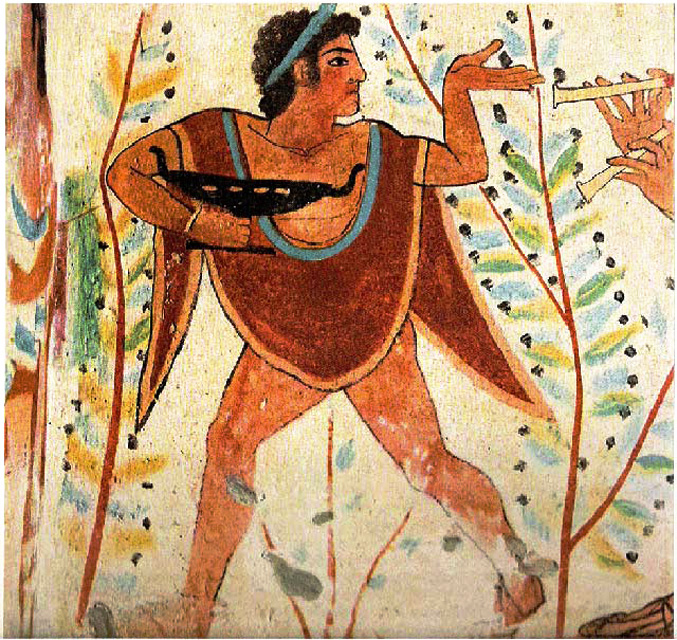|
Francesco Ficoroni
Francesco (de') Ficoroni (1664–1747) was an Italian connoisseur and antiquarian in Rome closely involved with the antiquities trade. He was the author of numerous publications on ancient Roman sculpture and antiquities, guides to the monuments of Rome and the city's ancient topography, and on Italian theatre and theatrical masks, among other subjects. For his antiquarian works he was made a Fellow of the Royal Society of London. A major segment of his potential audience, both for his publications and for the objects from his perpetually changing collection, was composed of British ''milordi'' on their Grand Tours. His complementary volumes on ancient and modern Rome (1744) remained in print long after his death: Thomas Jefferson purchased both volumes while he was abroad in 1785-89. Life Ficoroni was born near Lugnano, in the ''comune'' of Valmontone, Latium. From 1705 to 1710 he undertook a series of excavations along the Via Appia in the ''vigna Moroni'', the Moroni vineyar ... [...More Info...] [...Related Items...] OR: [Wikipedia] [Google] [Baidu] |
Mosaics
A mosaic is a pattern or image made of small regular or irregular pieces of colored stone, glass or ceramic, held in place by plaster/mortar, and covering a surface. Mosaics are often used as floor and wall decoration, and were particularly popular in the Ancient Roman world. Mosaic today includes not just murals and pavements, but also artwork, hobby crafts, and industrial and construction forms. Mosaics have a long history, starting in Mesopotamia in the 3rd millennium BC. Pebble mosaics were made in Tiryns in Mycenean Greece; mosaics with patterns and pictures became widespread in classical times, both in Ancient Greece and Ancient Rome. Early Christian basilicas from the 4th century onwards were decorated with wall and ceiling mosaics. Mosaic art flourished in the Byzantine Empire from the 6th to the 15th centuries; that tradition was adopted by the Norman Kingdom of Sicily in the 12th century, by the eastern-influenced Republic of Venice, and among the Rus. Mosaic fell ou ... [...More Info...] [...Related Items...] OR: [Wikipedia] [Google] [Baidu] |
Collegio Romano
The Roman College ( la, Collegium Romanum, it, Collegio Romano) was a school established by St. Ignatius of Loyola in 1551, just 11 years after he founded the Society of Jesus (Jesuits). It quickly grew to include classes from elementary school through university level and moved to several successive locations to accommodate its burgeoning student population. With the patronage of Pope Gregory XIII, the final seat of the Roman College was built in 1584 near the center of Rome's most historic Pigna district, on what today is called Piazza del Collegio Romano, adding the church of St. Ignatius in 1626, and a renowned observatory in 1787. The college remained at this location for 286 years until the revolutionary Capture of Rome in 1870.In 1870, the new Italian government confiscated the property of the university and their building (that eventually became the Ennio Quirino Visconti Liceo Ginnasio), which forced the university to transfer to the Palazzo Gabrielli-Borromeo on the ... [...More Info...] [...Related Items...] OR: [Wikipedia] [Google] [Baidu] |
Athanasius Kircher
Athanasius Kircher (2 May 1602 – 27 November 1680) was a German Jesuit scholar and polymath A polymath ( el, πολυμαθής, , "having learned much"; la, homo universalis, "universal human") is an individual whose knowledge spans a substantial number of subjects, known to draw on complex bodies of knowledge to solve specific pro ... who published around 40 major works, most notably in the fields of comparative religion, geology, and medicine. Kircher has been compared to fellow Jesuit Roger Joseph Boscovich and to Leonardo da Vinci for his enormous range of interests, and has been honoured with the title "Master of a Hundred Arts".Woods, p. 108. He taught for more than 40 years at the Roman College, where he set up a wunderkammer. A resurgence of interest in Kircher has occurred within the scholarly community in recent decades. Kircher claimed to have deciphered the Egyptian hieroglyphs, hieroglyphic writing of the ancient Egyptian language, but most of ... [...More Info...] [...Related Items...] OR: [Wikipedia] [Google] [Baidu] |
Praeneste
Palestrina (ancient ''Praeneste''; grc, Πραίνεστος, ''Prainestos'') is a modern Italian city and ''comune'' (municipality) with a population of about 22,000, in Lazio, about east of Rome. It is connected to the latter by the Via Prenestina. It is built upon the ruins of the ancient city of Praeneste. Palestrina is the birthplace of composer Giovanni Pierluigi da Palestrina. Geography Palestrina is sited on a spur of the Monti Prenestini, a mountain range in the central Apennines. Modern Palestrina borders the following municipalities: Artena, Castel San Pietro Romano, Cave, Gallicano nel Lazio, Labico, Rocca di Cave, Rocca Priora, Rome, San Cesareo, Valmontone, Zagarolo. History Ancient Praeneste Ancient mythology connected the origin of Praeneste to Ulysses, or to other fabled characters such as Caeculus, Telegonus, Erulus or ''Praenestus''. The name probably derives from the word ''Praenesteus'', referring to its overlooking location. Early burials show ... [...More Info...] [...Related Items...] OR: [Wikipedia] [Google] [Baidu] |
Palestrina
Palestrina (ancient ''Praeneste''; grc, Πραίνεστος, ''Prainestos'') is a modern Italian city and ''comune'' (municipality) with a population of about 22,000, in Lazio, about east of Rome. It is connected to the latter by the Via Prenestina. It is built upon the ruins of the ancient city of Praeneste. Palestrina is the birthplace of composer Giovanni Pierluigi da Palestrina. Geography Palestrina is sited on a spur of the Monti Prenestini, a mountain range in the central Apennines. Modern Palestrina borders the following municipalities: Artena, Castel San Pietro Romano, Cave, Gallicano nel Lazio, Labico, Rocca di Cave, Rocca Priora, Rome, San Cesareo, Valmontone, Zagarolo. History Ancient Praeneste Ancient mythology connected the origin of Praeneste to Ulysses, or to other fabled characters such as Caeculus, Telegonus, Erulus or ''Praenestus''. The name probably derives from the word ''Praenesteus'', referring to its overlooking location. Early burials show that ... [...More Info...] [...Related Items...] OR: [Wikipedia] [Google] [Baidu] |
Etruscan Society
Etruscan society is mainly known through the memorial and achievemental inscriptions on monuments of Etruscan civilization, especially tombs. This information emphasizes family data. Some contractual information is also available from various sources.See under Etruscan language. The Roman and Greek historians had more to say of Etruscan government. Aristocratic families Society of the tombs The population described by the inscriptions owned the tombs in which their relatives interred them and were interred in turn. These were the work of craftsmen who must have gone to considerable expense, for which they must have been paid. The interment chambers also were stocked with furniture, luxury items and jewelry, which are unlikely to have been available to the ordinary citizen. The sarcophagi were ornate, each one a work of art. The society of the tombs therefore was that of the aristocrats. While alive they occupied magistracies recorded in the inscriptions. Their magisterial func ... [...More Info...] [...Related Items...] OR: [Wikipedia] [Google] [Baidu] |
Carlo Fea
Carlo Fea (4 June 1753 - 18 March 1836) was an Italian archaeologist. Biography Born at Pigna, in Liguria, Fea studied law in Rome, receiving the degree of doctor of laws from the university of La Sapienza, but archaeology gradually attracted his attention, and with the view of obtaining better opportunities for his research in 1798 he took Holy Orders and became an Abbott. For political reasons he was forced to take refuge in Florence; on his return to Rome in 1799 he was imprisoned as a Jacobin by the Neapolitans, who at that time were occupying Rome, but was shortly afterwards freed and appointed ''Commissario delle Antichità'' and librarian to Prince Sigismondo Chigi. At Rome in 1781 Fea discovered a statue of a discus thrower, the so-called ''"Discobolus"'', one of the known Roman copies of the famous Greek original statue in bronze created by Myron. Fea helped frame legislation to control the trade in, and excavation of, the antiquities of Rome, and undertook archaeol ... [...More Info...] [...Related Items...] OR: [Wikipedia] [Google] [Baidu] |
Hadrian's Villa
Hadrian's Villa ( it, Villa Adriana) is a UNESCO World Heritage Site comprising the ruins and archaeological remains of a large villa complex built c. AD 120 by Roman Emperor Hadrian at Tivoli outside Rome. The site is owned by the Republic of Italy and has been managed since 2014 by the Polo Museale del Lazio. History The villa was constructed at Tibur (modern-day Tivoli) as a retreat from Rome for Emperor Hadrian during the second and third decades of the 2nd century AD. Hadrian is said to have disliked the palace on the Palatine Hill in Rome, leading to the construction of the retreat. It was traditional for the Roman emperor to have constructed a villa as a place to relax from everyday life. Previous emperors and Romans with wealth, such as Trajan, had also constructed villas. Many villas were also self-sustaining with small farms and did not need to import food.. Though emperors’ villas were supposed to be a place of rest and leisure, there is some evidence of Had ... [...More Info...] [...Related Items...] OR: [Wikipedia] [Google] [Baidu] |
Carlo Maratta
Carlo Maratta or Maratti (13 May 162515 December 1713) was an Italian painter, active mostly in Rome, and known principally for his classicizing paintings executed in a Late Baroque Classical manner. Although he is part of the classical tradition stemming from Raphael, he was not exempt from the influence of Baroque painting and particularly in his use of colour. His contemporary and friend, Giovanni Bellori, wrote an early biography on Maratta. Biography Born in Camerano (Marche), then part of the Papal States, Maratta went to Rome in 1636, accompanied by, Don Corintio Benicampi, secretary to Taddeo Barberini. He became an apprentice in the studio of Andrea Sacchi. It was at this time that the debate between Sacchi and Pietro da Cortona took place at the Accademia di San Luca, the artists academy in Rome. Sacchi argued that paintings should only have a few figures which should express the narrative whereas Cortona countered that a greater number of figures allowed for the develop ... [...More Info...] [...Related Items...] OR: [Wikipedia] [Google] [Baidu] |
Francesco Bianchini
Francesco Bianchini (13 December 16622 March 1729) was an Italian philosopher and scientist. He worked for the curia of three popes, including being ''camiere d'honore'' of Clement XI, and secretary of the commission for the reform of the calendar, working on the method to calculate the astronomically correct date for Easter in a given year. Life and work Bianchini was born of a noble family at Verona, the son of Giuseppe Bianchini and his wife, Cornelia Vailetti. Educated by Jesuits in Bologna, and by the Paduan astronomer, Geminiano Montanari, Bianchini spent most of his university years in Padua studying comets while enrolled in Theology. This early training in astronomy established Bianchini's commitment to the experimental and physical sciences. In 1684 he went to Rome, and became librarian to Cardinal Ottoboni, who, as Pope Alexander VIII (1689), raised him to the offices of papal chamberlain and canon of Santa Maria Maggiore. Clement XI sent him on a mission to Paris in ... [...More Info...] [...Related Items...] OR: [Wikipedia] [Google] [Baidu] |





